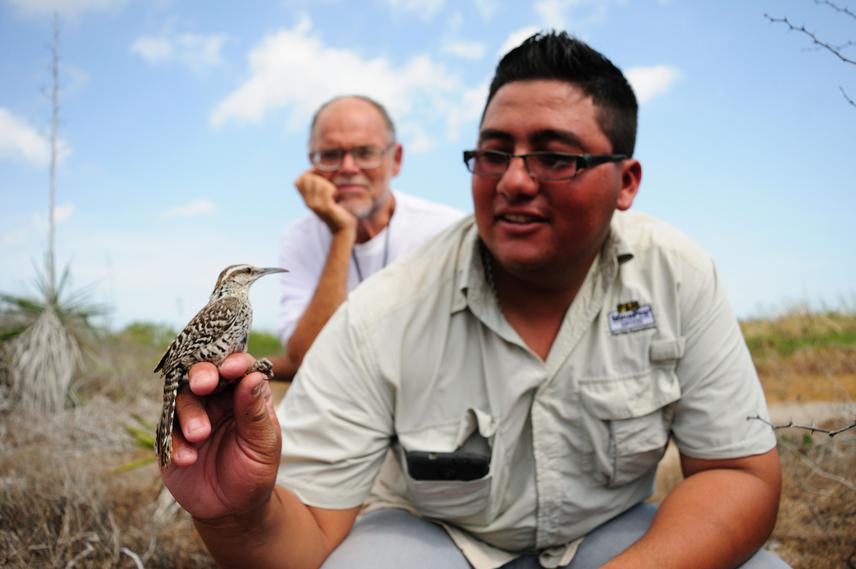Anay Serrano Rodríguez
Other projects
9 Oct 2017
Genetic Diversity of an Endangered and Endemic Bird of Yucatan Peninsula (Campylorhynchus yucatanicus) for Conservationist Aims II
The aim of this project is to map the potential distribution of C. yucatanicus and assess the effect of habitat fragmentation on its presence and abundance.

Training of guides, inhabitants of communities near to the study sites and bird observers in Ría Lagartos.
Campylorhynchus yucatanicus is endemic to the Yucatan Peninsula and is endangered, partly due to its restricted distribution along a narrow strip of low coastal arid scrub (matorral). The main threat to this species is infrastructure development driven by the expansion of local communities and more recently from tourism, resulting in the loss and fragmentation of its habitat. The degree of fragmentation is unknown, impeding the implementation of a viable and appropriate conservation management plan. The aim of this project is to map the potential distribution of C. yucatanicus and assess the effect of habitat fragmentation on its presence and abundance.
The distribution map of the species and its habitat will allow the identification of the areas under the highest threat and therefore of priority for conservation and management. The characterization of suitable habitat and the evaluation of the importance of each variable for the presence of the species will facilitate proposals for future management actions.
We plan to involve students, protected area staff, ornithologists/birdwatchers and communities in the zones around the study area. We will prepare leaflets and posters to inform the communities of the presence, characteristics and importance of the species and its habitat, with the aim of raising awareness and involving inhabitants in its research and conservation.
All this generated information will be used in the protection of the specie in order to improve management strategies.